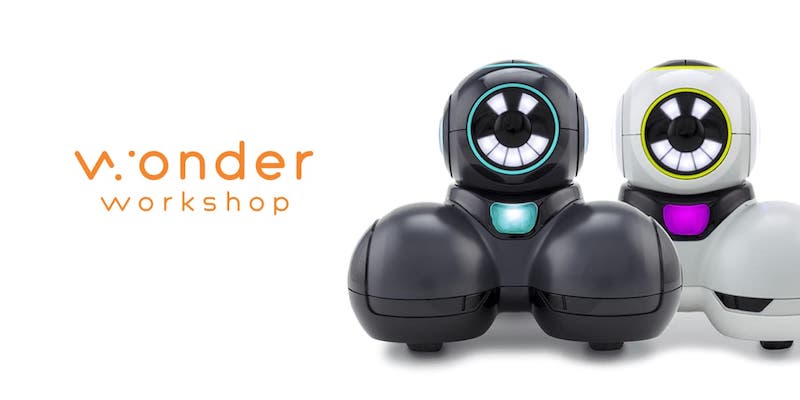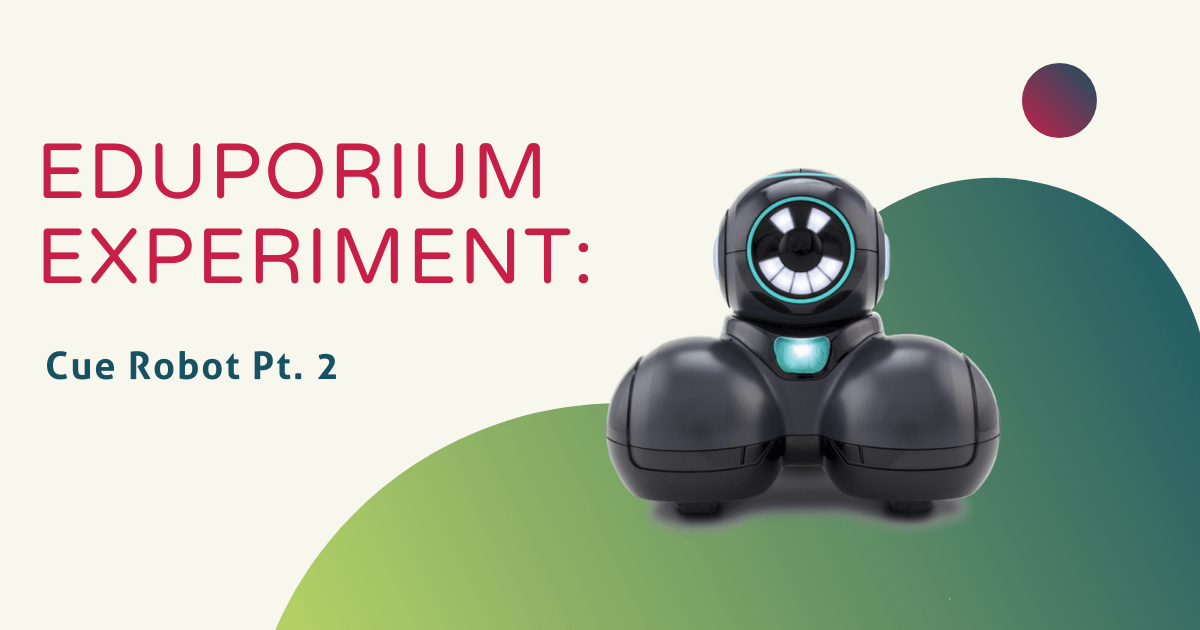In this edition of the Eduporium Experiment, we’re revisiting Wonder Workshop’s Cue Robot! As outlined in a previous version of this series, the Cue is designed for children aged 11 and up, ideal for introducing them to artificial intelligence, and helps them advance their coding skills. With this charismatic robot and accompanying app from Wonder Workshop, students can play games, chat, control, and program the Cue in Blockly or JavaScript. They can even pick one of four avatars to represent and track their progress: Charge, Zest, Smirk, and Pep! Each avatar is preprogrammed with unique personalities, expressions, and interactions.
The Cue kit comes with the robot, stickers, a charger, and connector blocks that can be used to attach LEGO structures to its frame. Best of all, there is absolutely no assembly required. All that remains for students to go before getting started with the Cue is downloading the Cue app and making sure the robot is fully charged.
Although I would have liked to explore another avatar, since last time we chose to interact with Pep, it costs $0.99 to interact with Charge, Zest, or Smirk. Despite this minor setback, I did manage to recruit robot enthusiast, Annabelle, to help me give the Cue a try. We started off by opening the app and did some simple coding using Blockly to change each of Pep’s three lights to different colors. We then programmed Pep to move forward and do a little head tilt.

The Cue Robot is great because its interface allows for all children of all skill levels to improve on their coding skills. It’s easy enough for younger children, but also has the ability to challenge those who have a little more coding experience. Although Annabelle and I only practiced basic coding, the app is designed to allow students to control all aspects of the Cue. More advanced coders can use the event, control, and variable tabs to program the Cue’s sensors and loop blocks as well.
In addition to programming the Cue to move, the control section of the Cue app includes some cool specs. In this section, kids can drive the Cue via joystick and increase or decrease its speed gauge. A small portion of the tablet screen is even dedicated to showing the Cue’s movement and sensor range in real time. Students can also click on the seek, avoid, and explore options to see how the Cue uses its proximity and sensor fusion to interact with its surroundings. There is also a way for kids to record their voice and play different messages with the touch of a button. If this isn’t enough entertainment, the app also has different educational games available in the chat function.
With so much to explore and learn with Wonder Workshop’s Cue robot, it’s bound to make any makerspace, classroom, or home more engaging. Be sure to check out the Cue and all the other Wonder Workshop products as well as other STEM solutions on the Eduporium store!
For the latest EdTech, STEM, and 21st century education news, follow us on Twitter and Instagram, like us on Facebook, or sign up for our newsletter for announcements on the best EdTech deals around! Have an idea for the next Eduporium Experiment? Send us a message on any of our social media accounts! And, look out next week for our next Tips & Tricks blog featuring the Cue’s older cousins, Dash and Dot!




1 Comment